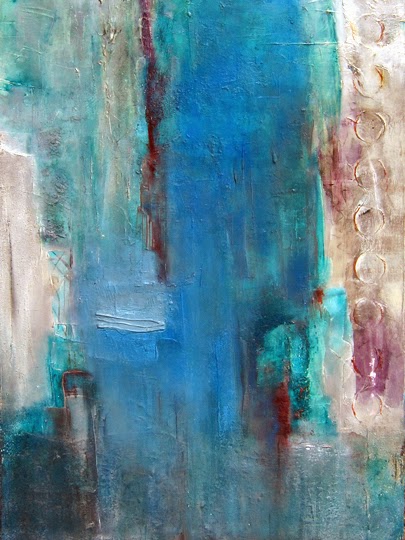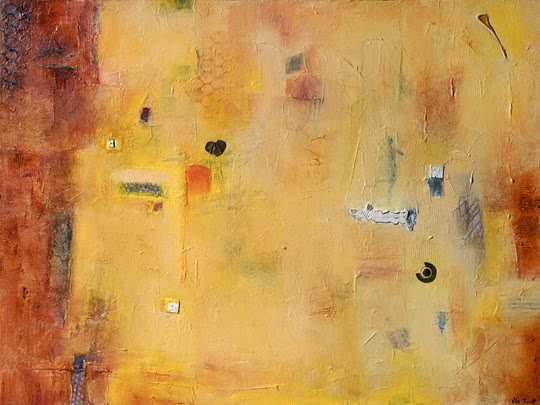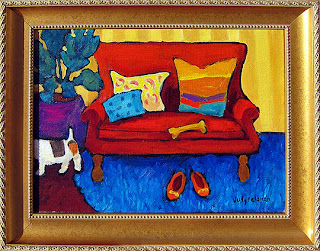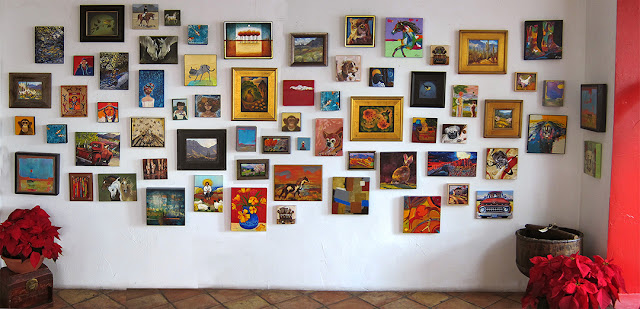I just finished reading an amusing book called “Steal Like an Artist,” by Austin Kleon. On one of the first pages, he says “What a good artist understands is that nothing comes from nowhere. All creative work builds on what came before. Nothing is completely original.”
 |
| Treats
36" x 48"
oil on canvas
Judy Feldman |
 |
| Afternoon at the Cote d'Azur 40" x 30" oil on canvas Judy Feldman |
For me, it’s always been the post-Impressionists – especially Matisse! I admire his amazing use of color, his disregard for the rules of perspective, and his emphasis on his reactions to what he saw, and how he transmitted those feelings in his paintings. Can you see his influence in my painting called “Treats?” Other painters, such as Bonnard and Gabrielle Munter also have inspired me. I’ve spent quite a bit of time in France, and I think that this, too, shows up in my paintings, such as “Afternoon at the Cote d’Azur.”
Following this theme of influences, I phoned a few Wilde Meyer artists to see who their muses were. Here are their responses:
Ryan Hale said his biggest influence is the work of the abstract expressionist Mark Rothko. “I particularly like his color field paintings, he explained. “I agree with his theory that color can expressfeeling, and admire his technique of painting thin, then building up layers to create soft, as well as defined areas.” You can see Rothko’s influence in Ryan’s painting entitled “Earthbound.”
 |
| Earthbound 60" x 48" acrylic on canvas Ryan Hale |
 |
| The City Sunset 60" x 72" acrylic on canvas Ryan Hale |
Sushe Felix lives in Colorado. Her southwest landscapes have a distinctive style, which she claims is derived from her interest in American abstract painters from the 1930’s and 40s, as well as the modernist and cubist movements. “In particular, I’ve been influenced by Raymond Jonson, who led the Transcendental Painting Group in Santa Fe,” Sushe explained.
 |
| Summer Afternoon 20.5 " x 20.5" acrylic on panel Sushe Felix |
 | |||
| Sunlit Canyon 29.5" x 35.5" acrylic on panel Sushe Felix |
 |
| Oranges I 30 " x 22" acrylic on paper Rudie van Brussel |
 |
| Fruit Table 45" x 61" oil on canvas Rudie van Brussel |
“Fruit Table” shows Rudie’s love of color, tempered by a soft layer of shading that reflects the influence of the Dutch masters. In another series, instead of the formal portraits done by the Old Masters, Rudie has chosen to paint animal portraits in a formal, yet whimsical style. I think Rudie also has been influenced by the magical realism of South America, when I look at his somewhat surreal paintings such as “Feathers” and “Tumbler.” As I said previously, our inspiration often springs from our subconscious – a mix of current and past experiences.
|
|
I think we all have muses in our lives – people we admire and who inspire us in our pursuits, artistic or otherwise. And, someday, we may be an inspiration to someone else!
You can see more work by Rudie van Brussel, Sushe Felix, Ryan Hale, and Judy Feldman at Wilde Meyer Gallery.






































